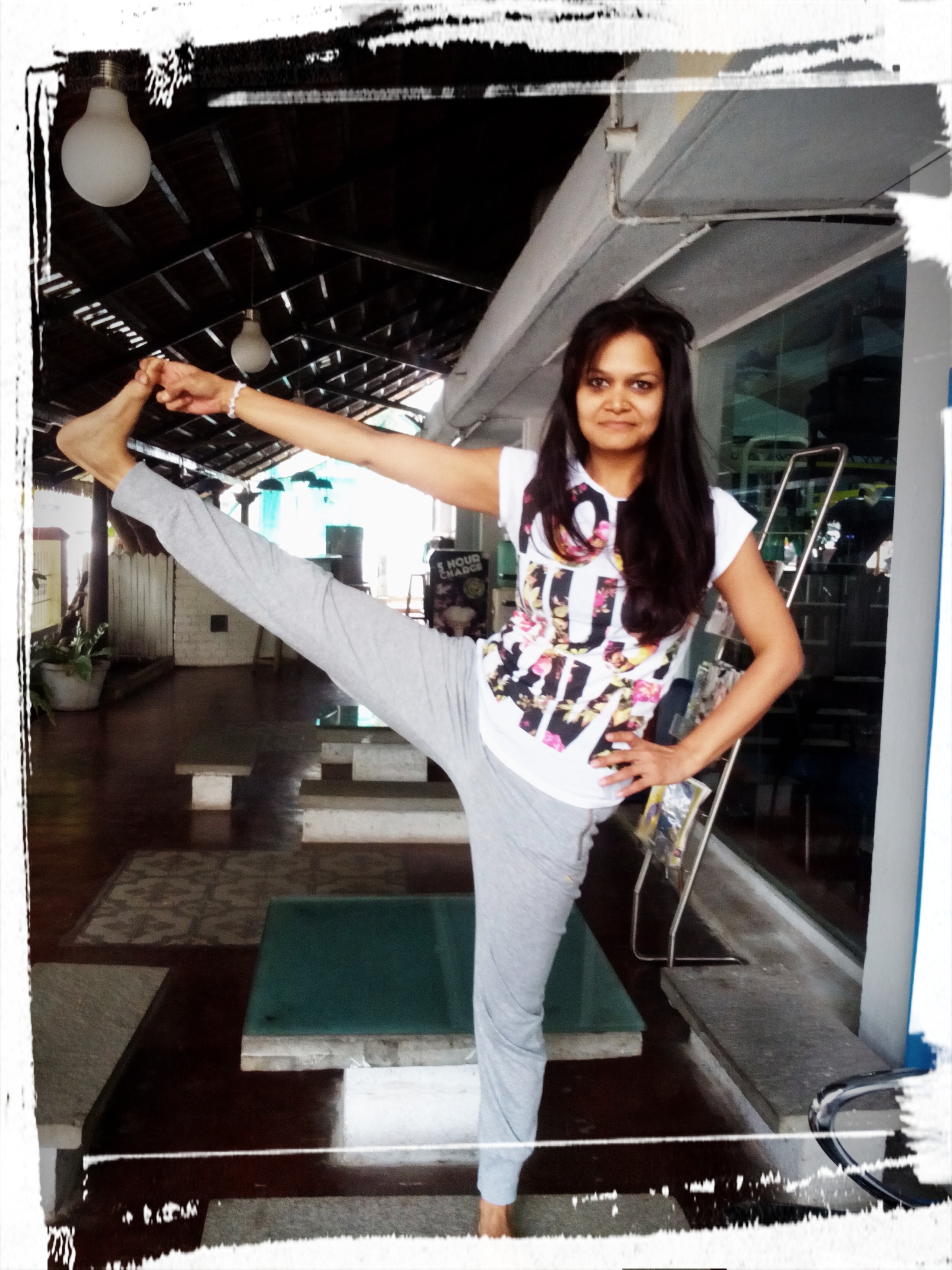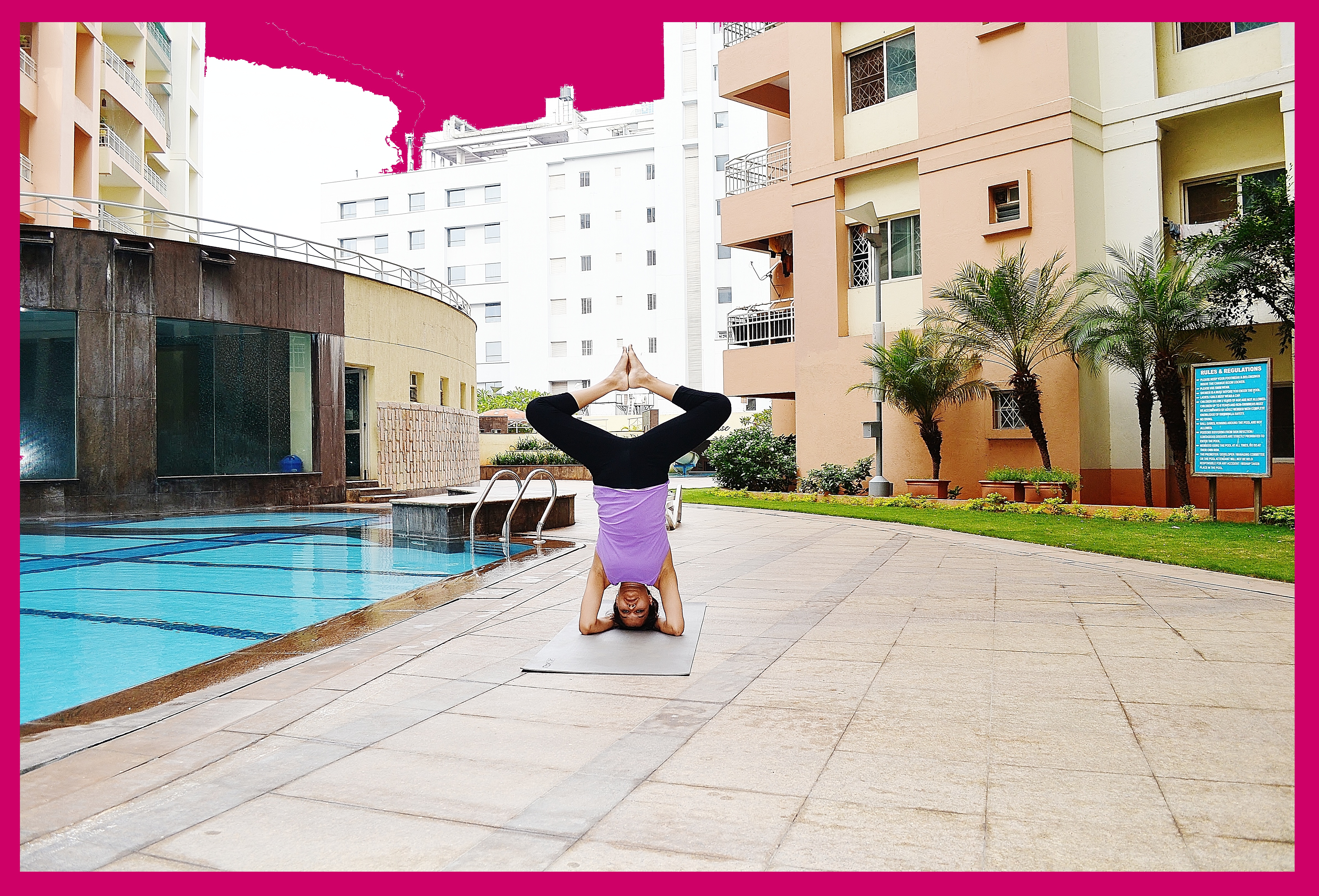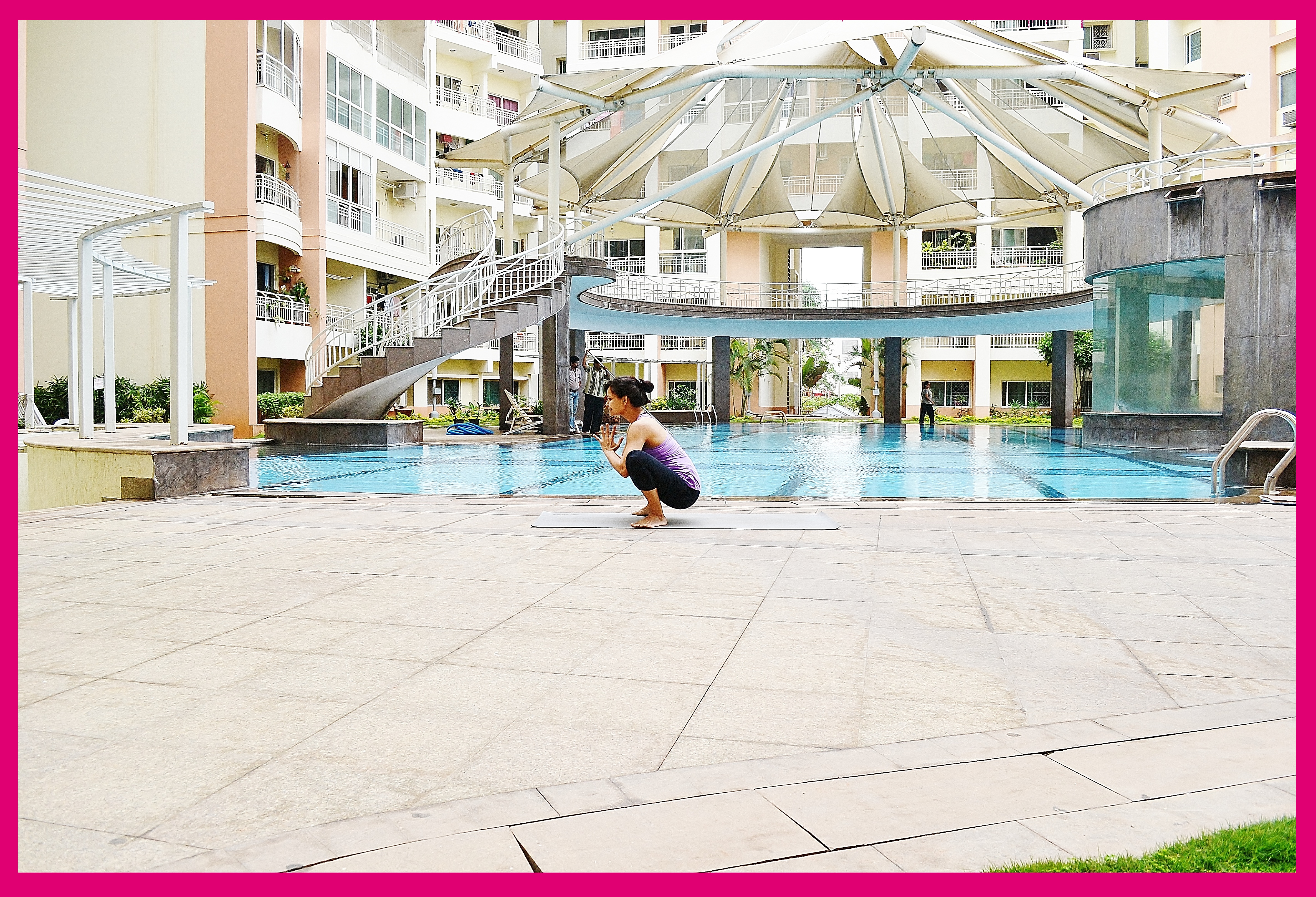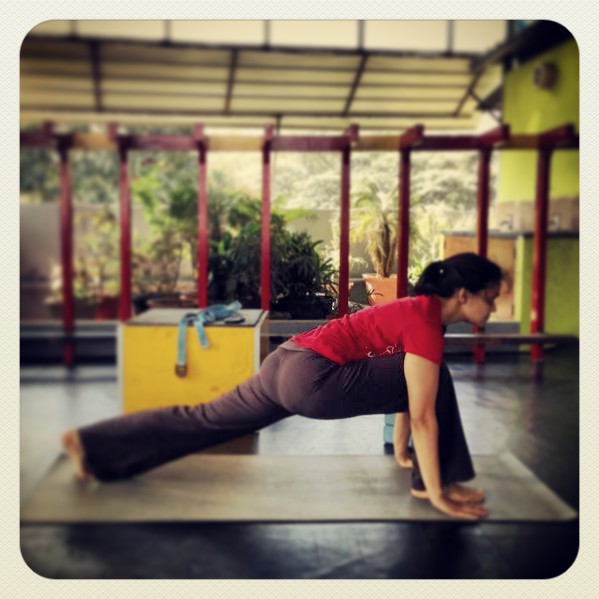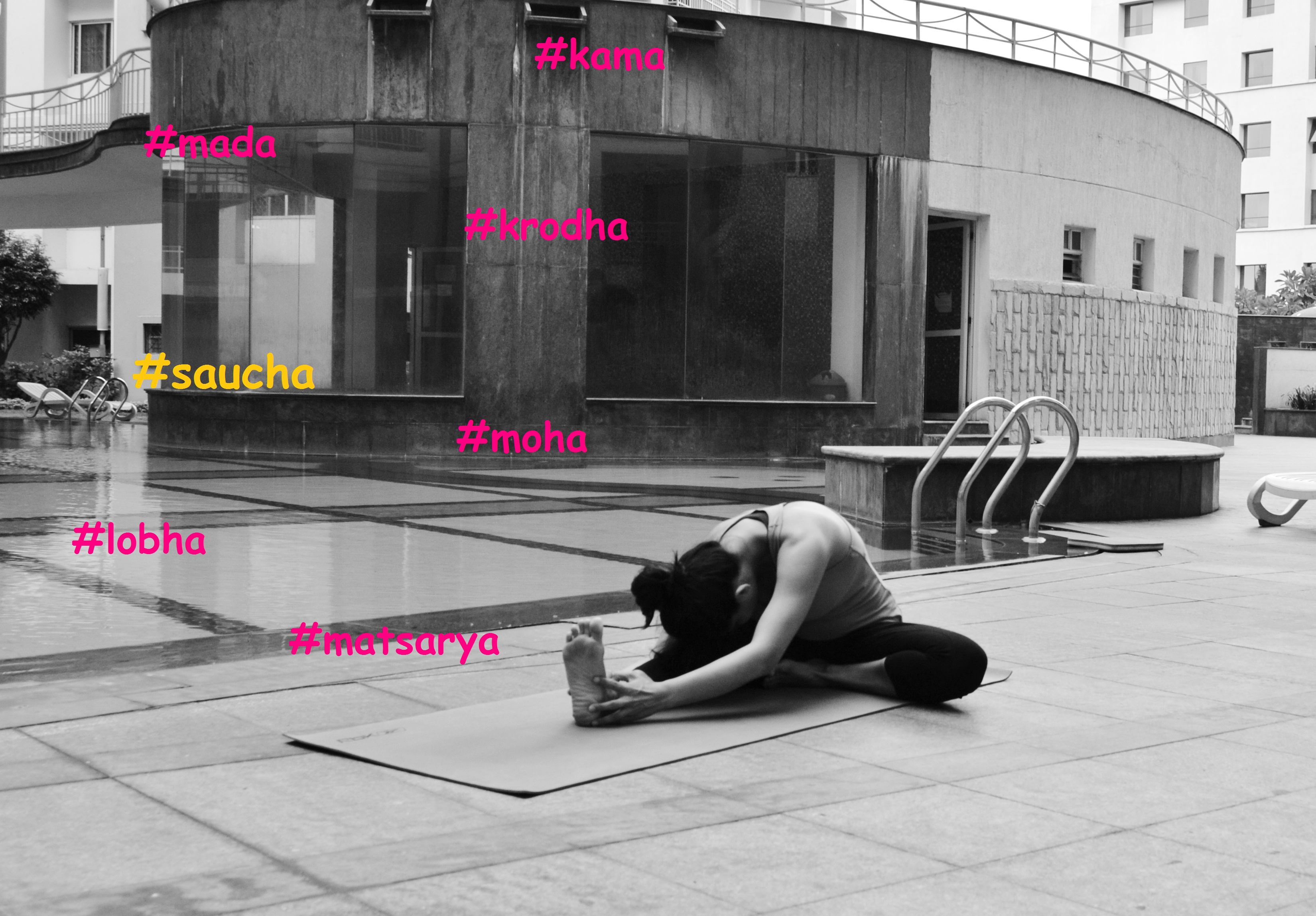 The niyama we’ll focus on today is Saucha – or cleanliness. At the grossest level this is about keeping our living and office spaces clean. At a little more subtle level this is about wearing clean clothes and keeping our bodies internally and externally clean. At a still more deep level this niyama is about living as truthfully and purely as you can. Your behavior, words and actions should reflect the truth and purity you believe in. Is your house really clean and organized? Or are there cupboards you’d be mortified if your guests saw? Do you have beautiful laundry hampers that contain months of of dirty laundry? When you go to your yoga class, do you make it a point not to step on other people’s mats and props? At a deeper level, do you constantly share your feelings of helplessness, anger, hurt, depression etc with others? We all go through a hard time once in a while, but do you constantly crib whenever you find a listener? Analyze why you do that, and then stop doing it. You are disturbing someone else’s peace and creating an imbalance in their energy. Look around you and analyze if you live clean, think clean and eat clean. If you don’t, make the change today.
The niyama we’ll focus on today is Saucha – or cleanliness. At the grossest level this is about keeping our living and office spaces clean. At a little more subtle level this is about wearing clean clothes and keeping our bodies internally and externally clean. At a still more deep level this niyama is about living as truthfully and purely as you can. Your behavior, words and actions should reflect the truth and purity you believe in. Is your house really clean and organized? Or are there cupboards you’d be mortified if your guests saw? Do you have beautiful laundry hampers that contain months of of dirty laundry? When you go to your yoga class, do you make it a point not to step on other people’s mats and props? At a deeper level, do you constantly share your feelings of helplessness, anger, hurt, depression etc with others? We all go through a hard time once in a while, but do you constantly crib whenever you find a listener? Analyze why you do that, and then stop doing it. You are disturbing someone else’s peace and creating an imbalance in their energy. Look around you and analyze if you live clean, think clean and eat clean. If you don’t, make the change today.
Saucha can be divided into internal and external saucha. Today we’ve covered how we can implement saucha externally. From tomorrow we’ll look at internal saucha. To maintain internal cleanliness and purity we must get rid of: kama, krodha, lobha, moha, mada and matsarya. One each day, so tune in every day! 🙂
 I met Louise in Wellington, when I first started teaching yoga. After a couple of months, I held her up as an example of ‘balance’ to the class. She is in her early 40s, has two beautiful childern, a rocking career, wonderful marriage…and she still found time for her yoga, tennis, hiking, reading etc. The credit for making her life so rich and full goes to no one but Louise. After all, she could also sit back and complain that she had wanted a career/tennis/amazing body/(fill in the blank) but had to give it up because of: children are too small/husband has a transferrable and demanding job/has other familial obligations/(fill in the blank). Granted Louise comes from a culture and country different from 95% of my students, and many who are reading this are thinking “well you know in our culture (fill in all the perceived limiting factors of being a married woman with kids in India)”.
I met Louise in Wellington, when I first started teaching yoga. After a couple of months, I held her up as an example of ‘balance’ to the class. She is in her early 40s, has two beautiful childern, a rocking career, wonderful marriage…and she still found time for her yoga, tennis, hiking, reading etc. The credit for making her life so rich and full goes to no one but Louise. After all, she could also sit back and complain that she had wanted a career/tennis/amazing body/(fill in the blank) but had to give it up because of: children are too small/husband has a transferrable and demanding job/has other familial obligations/(fill in the blank). Granted Louise comes from a culture and country different from 95% of my students, and many who are reading this are thinking “well you know in our culture (fill in all the perceived limiting factors of being a married woman with kids in India)”.
Now I have an example of an Indian woman (yes, married to a man who has a demanding and transferrable job; yes, has two  growing children who demand/want time/attention; yes, has all the familial obligations that come with being from our culture) who reminds me of Louise. Sharmishta Vardhan has been regular in my class from Day 1. When I got to know her better, I found out that she’s a Bharatnatyam dancer. When there’s no yoga she goes for a walk. She’s an amazing swimmer and has been swimming since she was 8 years old. (Incidentally, she taught me how to swim within 10 days. I’m confident standing on my head on land, but 10 days ago I would list drowning as my biggest fear.) Here’s an Indian woman, in her 40s, married for 9 years, two crazily energetic boys (I’ve seen them in the pool), who defies the ‘Indian woman married with two kids’ convention. She reads, sometimes travels to pursue her hobbies, gets in her daily swim before heading home for dinner, cultivates her own friends circle with whom she goes for movies, exhibitions, fairs etc. You can see the results of daily yoga in her before-after.
growing children who demand/want time/attention; yes, has all the familial obligations that come with being from our culture) who reminds me of Louise. Sharmishta Vardhan has been regular in my class from Day 1. When I got to know her better, I found out that she’s a Bharatnatyam dancer. When there’s no yoga she goes for a walk. She’s an amazing swimmer and has been swimming since she was 8 years old. (Incidentally, she taught me how to swim within 10 days. I’m confident standing on my head on land, but 10 days ago I would list drowning as my biggest fear.) Here’s an Indian woman, in her 40s, married for 9 years, two crazily energetic boys (I’ve seen them in the pool), who defies the ‘Indian woman married with two kids’ convention. She reads, sometimes travels to pursue her hobbies, gets in her daily swim before heading home for dinner, cultivates her own friends circle with whom she goes for movies, exhibitions, fairs etc. You can see the results of daily yoga in her before-after.
 So next time you think you don’t have time for yoga remember that there are women like Louise and Sharmishta who are busy living the lives they love, and making time for yoga as well! 🙂
So next time you think you don’t have time for yoga remember that there are women like Louise and Sharmishta who are busy living the lives they love, and making time for yoga as well! 🙂
Today is the last day of our gratitude challenge. Today lets take a moment to appreciate all the mistakes we’ve made in life. After all, mistakes teach you a lot about yourself and the world around you. Mistakes help you understand what you actually want in life. They take you on adventures that make you who you are. If it weren’t for mistakes we wouldn’t have so much to be grateful for!
We hear of people denied fundamental human rights in different parts of the world, honor killings, girls being kidnapped to make some kind of convoluted point etc. It’s horrifying, unsettling, unfair, illogical…and it’s happening! So today lets join our hands together and be thankful to the freedom that we usually take for granted and send courage and hope to people stuck in situations beyond their control, for no fault of theirs. Namaste.
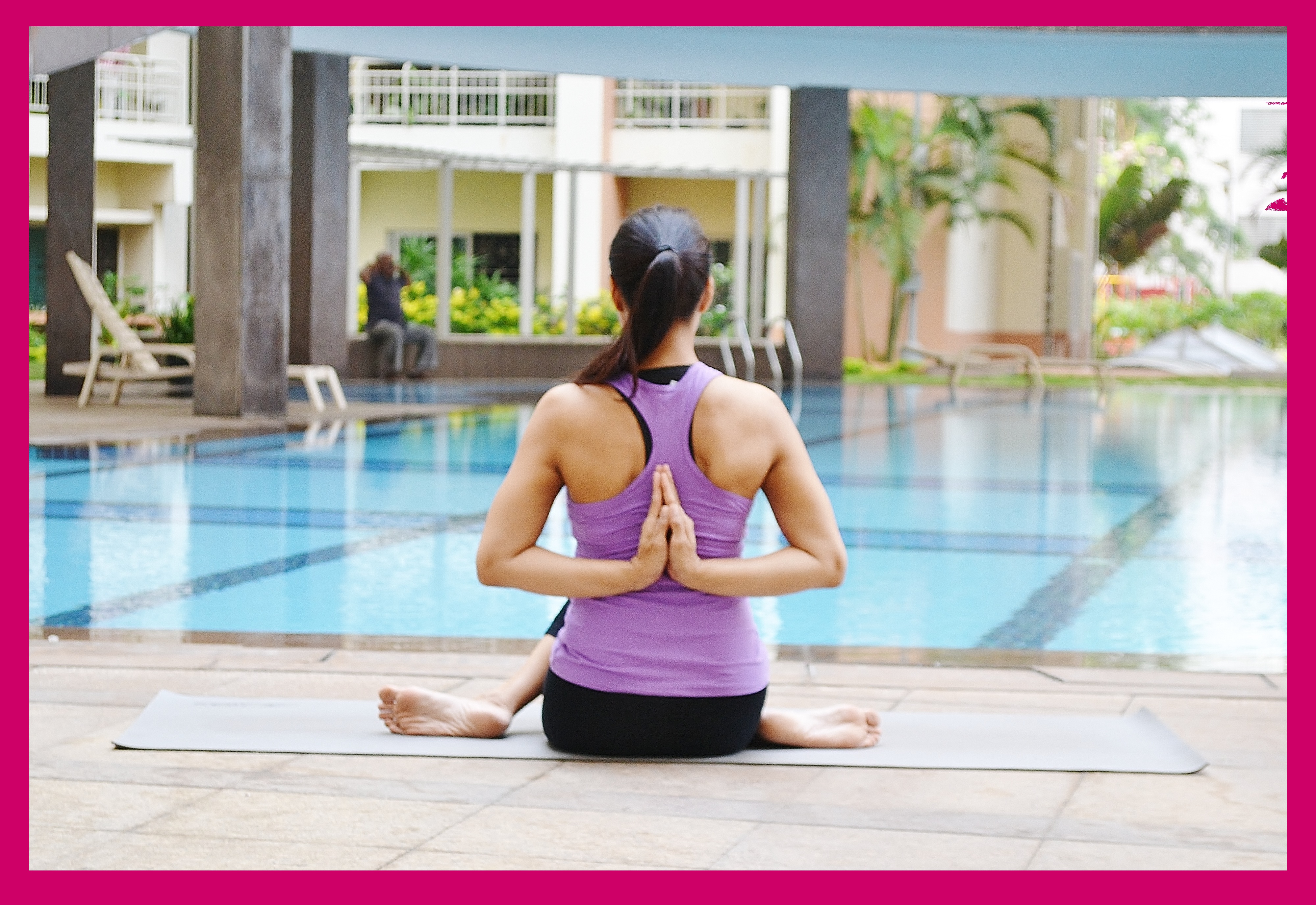
Now, everyone has those days when they feel blah. You don’t feel like getting up, your life and what you seems pointless, you don’t feel good about the decisions you’ve made, you feel insecure, uncertain….basically ‘blah’! So you may pick up the phone and call a friend, or listen to some soothing music, or read some inspirational words…something that allows you to reach into your reserves and tell you ‘this too shall pass’. Today let’s join our hands together and be thankful for what gives us strength, because some days you don’t need anything else!
PCOS or Poly Cystic Ovarian Syndrome is a condition that 1 in 15 women experience. To put it briefly PCOS effects a woman’s mensturation cycle, her weight, her moods and her ability to have children. If left untreated it can lead to cardiovascular disease, diabetes, acne, hair loss, depression. Here are a few reasons why yoga can help with PCOS:
1. Most yoga classes incorporate strengthening poses that need to be held for long periods of time. This helps in building muscle and increased muscle mass helps in decreasing insulin resistance.
2. Most power yoga and Ashtanga yoga classes will have you increasing your heart rate and building up a sweat. This helps in burning fat and getting you back into shape.
3. Most yoga classes have a combination of pranayama and meditation techniques and this helps in calming down the body and ensuring the cortisol is in check.
4. A regular yoga practice helps to build a positive self image and acceptance of your body. This helps you to live in harmony and fortifies you to deal with whatever emotional and physical problems may come your way.
To derive benefits from yoga it’s imperative that you cultivate a wholesome daily practice. Poses such as the Butterfly Pose, Badhakonasana, Suptabadhakonasana, Bhardvajasana etc can help in treating the symptoms of PCOS. Along with these, the SuryaNamaskar provides a great way to build up a sweat and burn fat. However, when you look for a yoga class make sure that it incorporates elements of the Surya Namaskar and asanas so that you get a holistic workout daily. This will ensure steady progress and long lasting results.

@Malaka Spice
It’s been close to 10 days here and my routine here is as challenging as ever. I realize that if it’s your first time here, then it does take a while to adjust and adapt. The first time I had a 4 hour practice I was incredulous … and didn’t know how to deal with it. Rather, I didn’t know how to make the most of it. When I practice at home it’s only for an hour and a half, and by the end of it I’m drained out. So the first few days here, I was always exhausted. So much so that I felt I couldn’t give the best in the asanas and always felt sloppy and ungainly throughout the practice. Mondays and Tuesdays specially, since practice on those days is almost 4 hours long, and by the time I’m done with practice its an ordeal just to walk home. My fantasies these days centre around buying an apartment next to the institute so that I can crawl home in no time and surface again only for the next class.
However, now I’ve started to get used to the routine. I’m actually able to make the most of the extended practice sessions. In fact, 2 hours is just about enough time for a satisfying practice…how I’m going to sustain this when I’m back in Bangalore is the stuff other blog posts are made of.
Yesterday I had my class in the evening (where I’m referred to as ‘Bangalore’, and another
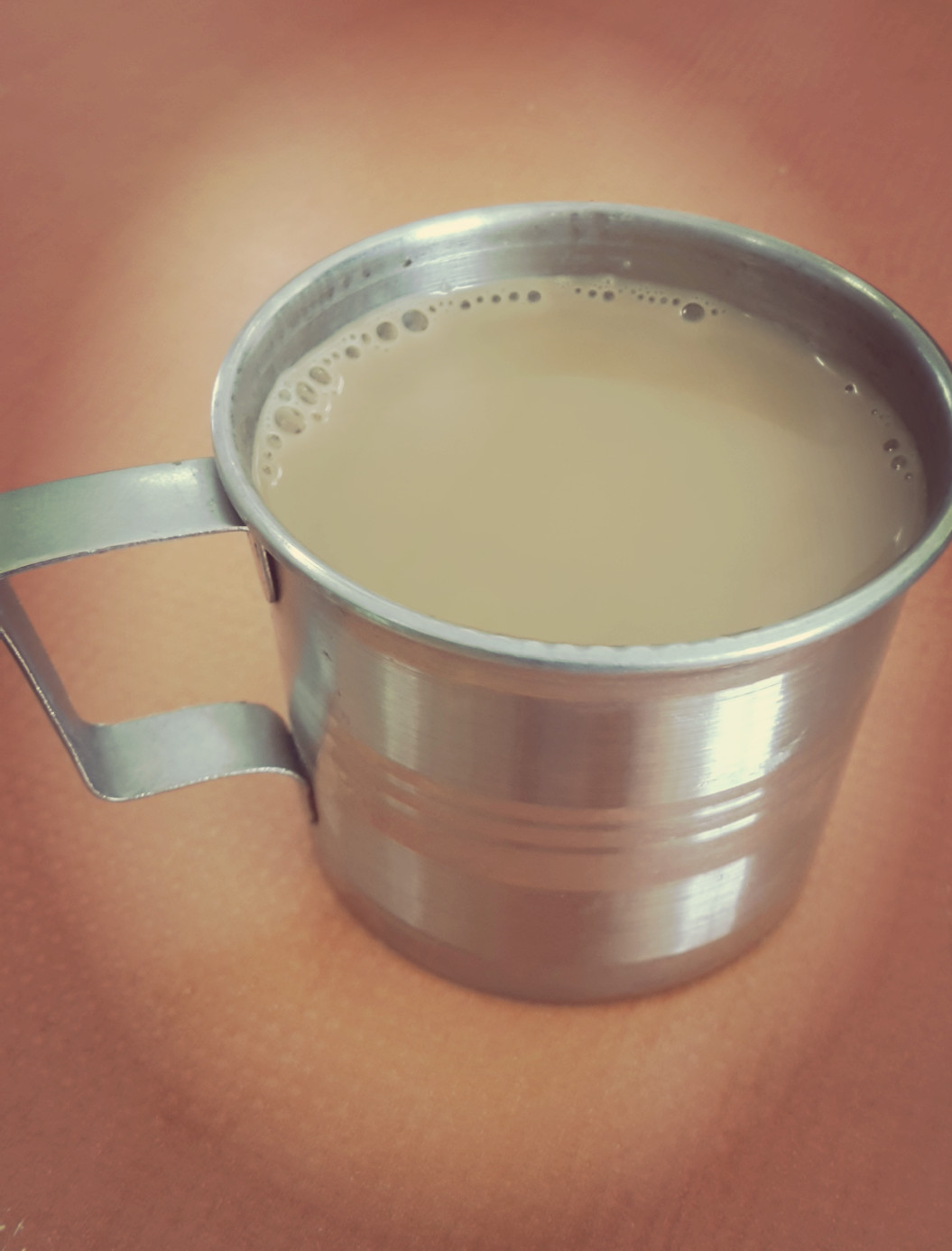
Milk tea just this once 🙂
girl is called ‘USA’, oh and then there’s ‘Madam China’ in the 6 am session). It was an amazingly intense session. The class was fast paced with a focus on stretching the lower body (Janu Sirsasana, Paschimottansana, Baddhakonasana etc). Finally we did the Upavista Konasana, which is a challenging pose for me. I slowly made my way down and eased my torso onto the floor. I remember the days when I started practicing yoga and this pose was a big challenge. I wouldn’t be able to extend my back and my hip joint was stiff. As the years went by, I was still pretty reluctant to practice this pose because it didn’t come naturally at all and it was frustrating. Even now, sometimes I’m able to execute this pose well, and sometimes I feel like lead.
Yesterday I was able to ease myself down and placed my forehead on the floor. I stayed there kind of happy and satisfied with myself. There’s always an element of pleasant surprise also, because some days your body can extend and some days it just doesn’t. This reverie lasted until I heard, “BANGALORE! You’re sleeping! Extend more! Walk forward with your hands!!! That’s it, that’s good. Trance mein chali gayi thi phir se.”
And I realized that for the most part, this is how I practice. I arrange myself into a pose and then my mind says, “This is it, you’ve done well. You’re done.” And then my pose goes dead, and progress stops. Or, as the teacher said, I fall asleep. So when I was told to extend more, I had to push through the limitations of my mind (kind of still the internal dialogue) and discover if I could, in fact, go further. I realized that I could, and for that little bit of time I experienced new life. And received a bit of enlightenment.
The Halasana is a pose that we do daily in class. We use props to ensure that the spine and neck are straight. The picture is of me doing the Halasana many years ago. When my internal dialogue was loud and overpowering. I’m sure it’s improved over the years. And after this class, I know how to work in this (and in all other asanas).
Halasana (Plough Pose)
How To
- Lie down straight on your back making sure your head lies on the floor.
- Exhale, bend your legs at the knees and bring your knees close to your chest.
- Lift your buttocks off of the floor supporting your back with your hands.
- Make sure to plant your elbows firmly on the floor.

- Bring your body perpendicular to the floor, until your sternum touches your chin.
- Gently extend your legs out behind your head.
- Keep your face and neck relaxed.
- Practice with your arms stretched out behind and fingers interlocked to relive pain and cramps in fingers, hands, wrists, elbows and shoulders.
Benefits
- Relieves fatigue.
- Helps to calm down the mind.
- Relaxes your eyes and brain.
- Controls hyper tension.
- Improves digestion.
- Lengthens the spine and improves alignment.
- Reduces insomnia and anxiety.
- Relieves stress-related headaches and migraines.
Contraindications
- Don’t practice during menstruation and if you have cervical spondylosis.
Ashwasanchalanasana (Horse Pose/Low Lunge)
How To
- In the Padahastasana place your fingers next to your toes so that they are in line with each other.
- Lift your right leg off of the floor, take it back and place it on the floor.
- Look forward.
- Make sure that your left knee is in line with your left ankle. The knee should NEVER go beyond the level of the ankle.
- Look straight ahead.
- Repeat on left side.
Variations
If your legs and thighs are a bit stiff, or if you have weak knees and ankles, then place your back knee on the floor.
Benefits
- Great to strengthen the legs.
- Relieves stress by opening up the groin region and the hips.
- Helps in stretching and strengthening the spine.
- Opens up the chest and enables deeper breathing.
- Provides a massage to the abdominal organs and stimulates digestion.
- Corrects curvature of the back.
- Alleviates symptoms of sciatica.
Contraindications
- Practice with caution if you have a knee injury.
- Be cautious if you’ve had a neck injury. Don’t strain to look forward, look down instead.
- Practice with caution if pregnant. If required place the back knee on the floor.
- Practice with caution if you have a back injury.
- Do not practice if you have stomach ulcers.
- Do not practice if you’ve just undergone abdominal surgery.
